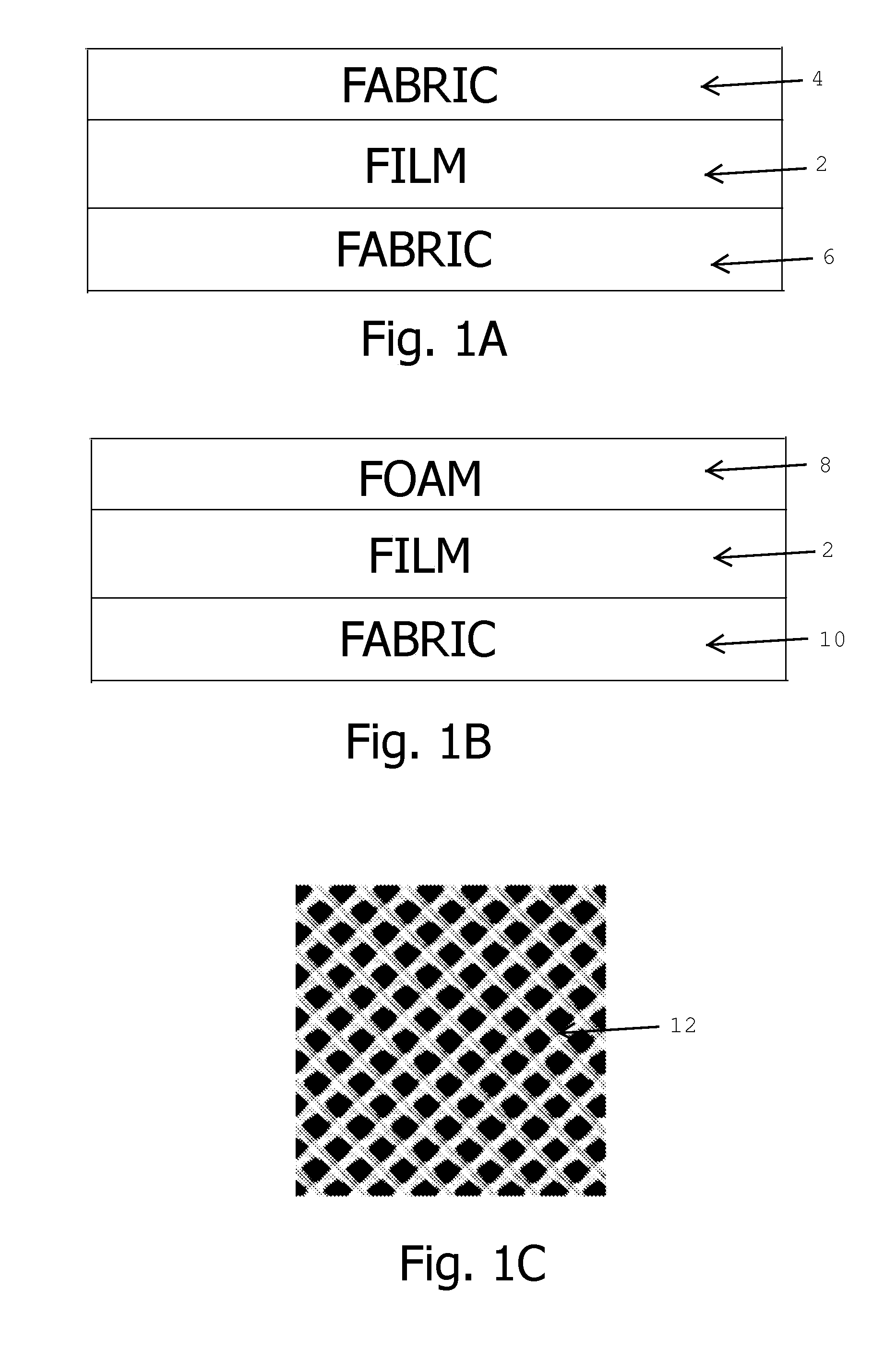Antimicrobial, infection-control and odor-control film and film composite
a technology of odor control and film, applied in the field of odor control materials, can solve the problems of toxic to humans, become problematic, illness or even death, and achieve the effect of small amount of additives
- Summary
- Abstract
- Description
- Claims
- Application Information
AI Technical Summary
Benefits of technology
Problems solved by technology
Method used
Image
Examples
example 1
[0059]Polyether-type thermoplastic urethane (TPU) film was made via melt processing and slot die extrusion. The polymer was Estane® 5714 sourced from Noveon, Cleveland Ohio and was dried prior to use to remove accumulated moisture. The film thickness ranged from 15 to 25 microns and for stability and processing ease, was cast onto a polyethylene liner with a finished width of 60″. Those familiar with film extrusion will recognize this as a standard process and thus the details are omitted. This is a typical fabric coating TPU and was modified with the addition of a silver / zinc antimicrobial agent equal to 1.0% of the total film weight. This “Masterbatch” was then added at the 5% level in the final process. The ultimate concentration of antimicrobial actives in the film was therefore 1.0% by weight. For an “active” AirQual Z200 sourced from ACT in Canton Mass. and is the product formerly sold under the DuPont MicroFree name was selected. To insure uniform dispersion, the “active” ant...
example 2
[0060]The master batch described in Example 1 was blended at the 5% level with 95% Elastollan® SP806-10, a polyether-type thermoplastic polyurethane (TPU) sourced from BASF, Wyandotte Mich. This mix was dried, melt processed and extrusion cast via a slot die at 62″ onto 2.0 mil polyethylene carrier with a 12 to 25 micron film thickness. This film was used as the external layer of a gel pad for use in footwear. The gel was a two-part reactive urethane mix with a low durometer and a permanent soft feel. In this composite, the antimicrobial and odor-control properties of the TPU film effectively impart efficacy to the entire film-covered surfaces of the gel pad.
example 3
[0061]The master batch described in Example 1 was blended at the 5% level with 95% Hytrel 8206, a specialty grade of block copolymer thermoplastic polyester elastomer sourced from DuPont, Wilmington Del. This formula was dried, melt processed and extrusion cast via a slot die at 62″ on 1.5 mil polyethylene carrier. The resultant very thin film was between 5 and 50 microns in thickness. Using conventional lamination techniques, this film was joined to various fabrics including camouflage pattern tricot knits and a Thinsulate® insulating layer from 3M. This is a typical fabric composite used for hunting apparel and jackets. The antimicrobial and odor-control performance of the “active” in the film is effectively imparted to the entire composite during real-life usage.
PUM
 Login to View More
Login to View More Abstract
Description
Claims
Application Information
 Login to View More
Login to View More - R&D
- Intellectual Property
- Life Sciences
- Materials
- Tech Scout
- Unparalleled Data Quality
- Higher Quality Content
- 60% Fewer Hallucinations
Browse by: Latest US Patents, China's latest patents, Technical Efficacy Thesaurus, Application Domain, Technology Topic, Popular Technical Reports.
© 2025 PatSnap. All rights reserved.Legal|Privacy policy|Modern Slavery Act Transparency Statement|Sitemap|About US| Contact US: help@patsnap.com


